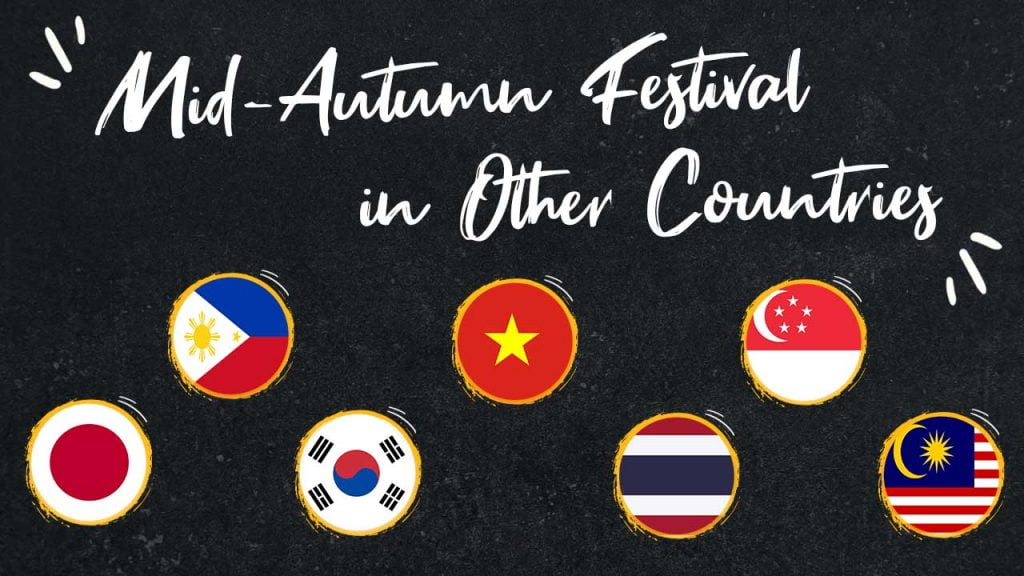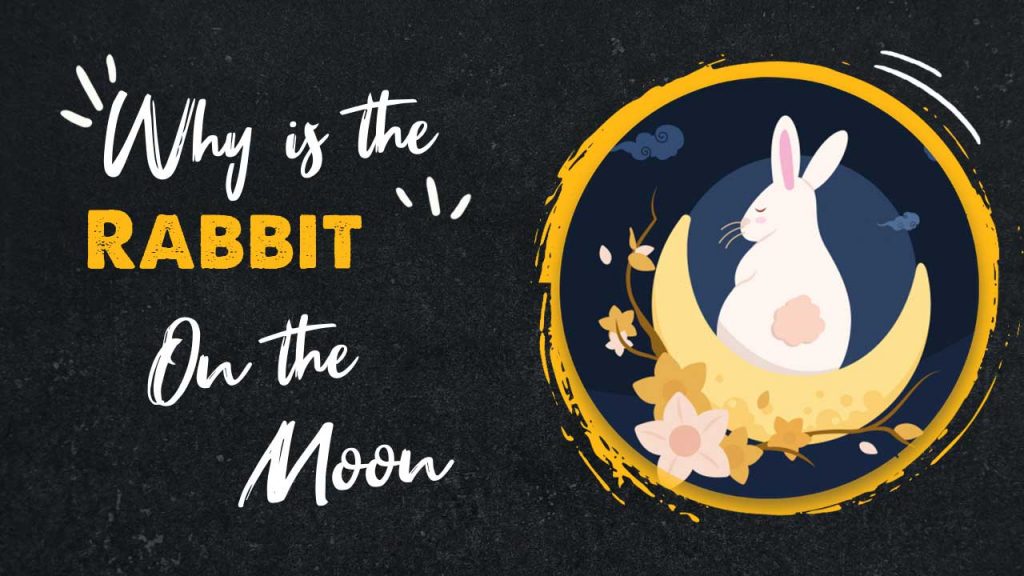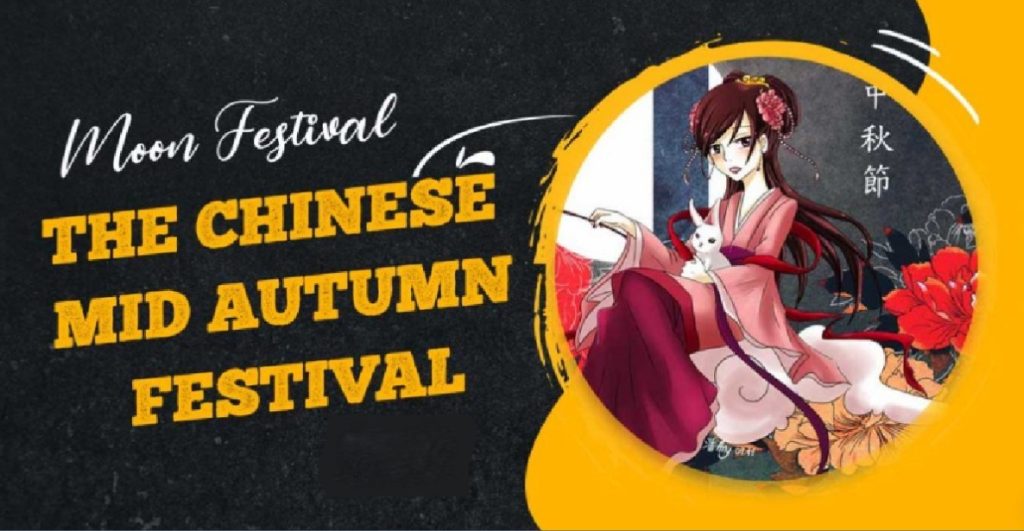Table of Contents
The Mid-Autumn Festival is a festival celebrated by East and Southeast Asian people marking the end of the autumn harvest. The festival, which falls on the 15th day of the 8th month of the Lunar Calendar, is also commonly known as the Moon Festival or the Mooncake Festival. It is an important holiday for the Chinese where families get together, worship the moon, and celebrate the harvest.
The names of the festival and the customs in each country and region differ. The festival is called Zhōngqiū Jié in Mandarin in China and is referred to by many other names in different countries. However, the main essence of the festival remains similar, focusing on family, prayers, and thanksgiving.
Let’s explore mid-autumn festivals in Philippines and other east Asian countries.
Which Countries Celebrate Moon Festivals?
Different countries have different mid-autumn festival legends and ways of celebrating this festival. The Mid-autumn festival Beijing is renowned worldwide, let’s look at other countries.
Japan

In Japan, the Mid-Autumn festival is called Tsukimi or moon viewing. The celebrations have been held since the Heian period (794-1185AD). It is said that the Chinese introduced the Japanese to this festival, and while the moon may not always be full on this day, it is supposed to be at its brightest.
No matter which country you are in, if it is a mid-autumn festival, mid-autumn festival food and delicacies are a must-try. Keeping up with this tradition, the Japanese eat rice dumplings called Tsukimi dango to honour the beauty of the moon. Other moon festival foods include edamame, chestnuts, taro and of course, moon rabbit mochi.
The Japanese eat rice dumplings called Tsukimi dango to honor the moon’s beauty. Other moon festival foods include edamame, chestnuts, and taro. Sweet potatoes and sake are also offered, and decorations of Japanese pampas, grass, or susuki are displayed. Sometimes, autumn flowers are placed in a vase in people’s homes or near the location from where they will be viewing the moon. Families gather and recite poetry under the full moon and pray for an abundant harvest.
Until the Meiji period (1868 AD), this lunar festival was celebrated by hosting long parties, though now the Japanese celebrate it quietly.
South Korea

In South Korea, Chuseok or the Mid-Autumn Festival is celebrated over three days. It is held around the autumn equinox and is also known as Hangawi. Families gather and give thanks for the plentiful harvest. They also conduct a traditional memorial ceremony called Charye and layout select food items on what is known as the Charge Table. They even visit their ancestors’ graves as a part of the tradition.
A significant food item during this occasion is a rice cake called Songpyeon. It is a half-moon-shaped rice cake and contains sweet or semi-sweet fillings. It is offered to their ancestors or even shared with family members and neighbours to represent the moon and prosperity. Some other foods include traditional liquor and jeon (Korean pancakes).
During Chuseok, the Koreans also travel to their hometowns to meet with their family members.
Vietnam

In Vietnam, the Mid-Autumn Festival or Têt Trung Thu is mainly celebrated by children. The children long for the Têt Trung Thu, where they are given lanterns, snacks, and fun masks.
During the festival, the Vietnamese worship the God of the Earth. Fruits, mooncakes, and snacks are laid out in their gardens, where they sit together, catch up, and appreciate the moon. The children also play with various types of lanterns during the night of the festival. The most prevalent lantern is a star made with red cellophane.
Tết Trung Thu marks the end of the harvest and a time when families are done with their work and can spend time with each other, making the event even more meaningful.
Lion dancing or múa lân is another essential element of the Mid-Autumn festivities here. A mythical lion, performed by acrobatic dancers, dances through the streets under the moonlight. The children themselves sometimes execute the dances. The lion dances are symbolic of good luck and the removal of unlucky forces. Besides this, the youth come together and sing joyful songs. This results in a beautiful sight of dozens of lions accompanied by drums beating throughout the town.
The Vietnamese, too, offer food to their ancestors and enjoy mooncakes during this festival.
Thailand

The Mid- Autumn Festival in Thailand has its tale. Legend has it that on the Mid-Autumn Festival Day, Eight Immortals visit the Palace of the Moon to wish the Goddess of Mercy. They offer peaches to her to bring prosperity and luck to the people on Earth.
Similarly, families worship the moon and gift each other peach-shaped cakes. The streets are filled with lights and people buying fruits and mooncakes for the occasion. The durian flavoured mooncake is the most famous during the festivities. The Pomelo, which is symbolic of reunions and large gatherings, is also eaten. People sometimes attend full moon parties or go on a cruise. There are a plethora of cultural shows, food stalls, and even beauty pageants, all held as a part of the celebration.
Singapore

Many people in Singapore are Chinese, so the festival is an important time for them. They send mooncakes to family members, friends, or even business associates to show their gratitude. Many people bake the dessert themselves as well. Their other activities, too, are similar to those in China.
The children hang lanterns around the house, and one will see many such lanterns all over the town during the weeks leading up to the main day. One of the most famous shows is the Lantern Fair held by the Singapore River.
The themes followed are based on Mid-Autumn traditions and stories of Chang’e and Wu Gang. Another loved Mid-Autumn Festival snack is Durian Cake.
They even have a carnival, and at night, the streets look spectacular with stalls selling all kinds of food items, ornaments, plants, clothes, and so much more!
Post dinner, families walk through the streets to look at the lanterns or participate in the famous Mass Lantern Walk. One can enjoy dragon dances and other live performances on the streets.
Over the years, the festival has had new additions like lantern competitions, lantern riddle-solving, and seashore parties. People with Chinese origin love to exchange lantern festival greetings in Singapore.
Malaysia

With a high Chinese population, the Mid-Autumn Festival in Malaysia is celebrated with great splendour. One can witness it all, from Lantern parades to opera performances to dragon and lion dances, especially in Kuala Lumpur.
The shops sell both traditional and modern mooncakes. So, why limit your taste to only red bean paste mooncakes? Go wild and buy oreo mooncakes, jujube mooncakes, or even savoury ones. These options have already made their way into everyone’s houses, especially during this time of the year. Restaurants also prepare huge mooncakes for people to try.
Like other countries, the people in Malaysia, too, gather with their families to admire the moon. A family dinner while eating mooncakes is a must during the Mid-Autumn Festival in Malaysia.
The shops and streets are decorated with lanterns, and many organize lantern painting competitions. Dragon and Lion dances are a famous sight on the streets. Many people even visit the Thean Hou Temple in Kuala Lumpur, which looks spectacular with the lanterns lit around its six tiers. Penang Hill is another prominent location where a Night Lantern walk takes place.
Philippines

The Mid-Autumn Festival in the Philippines is a major holiday for the Chinese living in the Philippines. Apartments and buildings are covered in lanterns, and Chinatown in Manila is the best place. Bridges and shops are adorned with streamers.
Parades are a major part of the festival, ranging from an ethnic clothing parade to a lantern parade to even a float parade. Over the years, people have become more creative and now make their lanterns using electronic devices. Many restaurants and hotels come up with special menus serving the festival’s favourites, especially mooncakes. Ducks, hairy crabs, and Pomelo are other food items that make it to the dining table.
The people get together to play a dice (gambling) game called Pua Tiong Chiu or Poa̍h-Tiong-chhiu (which means “mid-autumn gambling” in Philippine Hokkien), and the winner generally gets mooncakes as their prize.
Families reunite to admire the moon and the beautiful lanterns and enjoy a large feast at the Mid-Autumn Festival in Philippines.
Differences In The Festivals:
Amongst the similarities, the festival is also known for its unique differences. Below are some ways it varies from country to country.
| Country | Name of Festival | No. of Days of Celebration | National Holiday | Origin |
| Japan | Tsukimi | 4 days | – | It is believed to have originated during the Heian period (794-1185AD) and was influenced by the Chinese Mid-Autumn Festival. Moon viewing is also considered to be a way of being grateful for a good harvest and wishing for similar fortune in the future. |
| South Korea | Chuseok | 3 days | 3-day Public Holiday | Chuseok is said to have originated from Gabae, which involved a weaving contest between two teams over a period of a month. The winning team would be the one which weaved more cloth. Some even say that Chuseok originated from the ancient worship of the moon during the harvest. |
| Vietnam | Tết Trung Thu | More of a children’s celebration for 1 to 3 days | – | Tết Trung Thu was influenced by China’s occupation of Vietnam. Celebrated at the end of the harvest, it is a big part of the Vietnamese culture now. |
| Thailand | 3 days | – | In Thailand, the festival emerged from the story of the Eight Immortals who visit the Moon Palace on this day and ask for prosperity and good luck for all the people on Earth by offering her peaches. | |
| Singapore | Moon Festival or Moon-Praying Festival or Mooncake Festival | 2 days | – | Singapore has also been influenced by Chinese beliefs. Here, the festival originated from the story of Lady Chang’e, who drank the elixir of immortality to save their kingdom and hence flew to the moon.Other origin stories include the Chinese Emperors of the Zhou Dynasty (1047BC-770BC), who would worship the moon for a bountiful harvest. |
| Malaysia | Lantern Festival | 1 day | – | Like Singapore, the Malaysians also follow the story of Chang’e saving the people from her husband, Hou Yi, in comparison to the love story told by others.The Malaysian Chinese also say that the ancient Emperors would offer sacrifices to the moon to pray for a good crop. |
| Philippines | Mooncake Festival | 2 day | – | In the Philippines, the Chinese tell the story of Chang’e stealing the elixir of immortality from her husband, where Hou Yi prepares mooncakes every year for her on the Mid-Autumn Festival Day.Other stories say that it originated with the Chinese using mooncakes to deliver messages as a part of the rebellion to overthrow the Yuan Dynasty (1279-1368), which started on the 15th day of the 8th month of the Lunar Calendar. |
Can non-Chinese celebrate the mid-autumn festival?
As seen above, there are very subtle differences in how the mid-autumn festival in China is different from the mid-autumn festival in Malaysia and other countries.
Yes, non-Chinese can celebrate the mid-autumn festival. There are no such restrictions on this.
People Also Ask
What is the Mid-Autumn Festival called in Japan?
The Mid-Autumn Festival is called the Tsukimi Festival in Japan.
How do people celebrate Tsukimi?
Some people may celebrate Tsukimi by eating rice dumplings, or by offering prayers to the moon.
What is Mid-Autumn Festival in Malaysia?
The Mid-Autumn Festival is a Chinese holiday that falls on the 15th day of the 8th month of the Chinese lunar calendar. The festival is also known as the Moon Festival, as it celebrates the harvest moon. Families get together to eat mooncakes and admire the full moon.
How do Malaysians celebrate Mooncake Festival?
Some Malaysians may celebrate by eating mooncakes together, while others may give mooncakes as gifts to friends and loved ones. Many workplaces will also give mooncakes to employees as a way to show appreciation.
Do Japanese people celebrate the Mid-Autumn Festival?
Yes, Japanese people celebrate the Mid-Autumn Festival.
How does Thailand celebrate Mid-Autumn Festival?
The Mid-Autumn Festival is celebrated in Thailand with mooncakes, lanterns, and dragon and lion dances.
Do Thai people celebrate Moon Festival?
Some Thai people may celebrate the Moon Festival, but it is not a widespread or well-known celebration in Thailand.
Do the Philippines celebrate Mid-Autumn Festival?
The Philippines celebrates Mid-Autumn Festival, also known as the Moon Festival, with mooncakes, lanterns, and dragon and lion dances.
Does Hong Kong celebrate Moon Festival?
Yes, Hong Kong celebrates Moon Festival.






